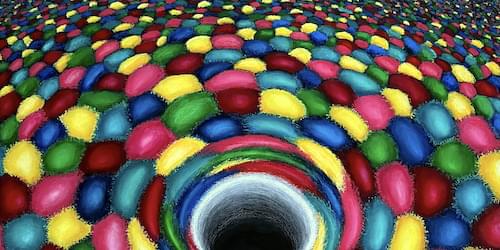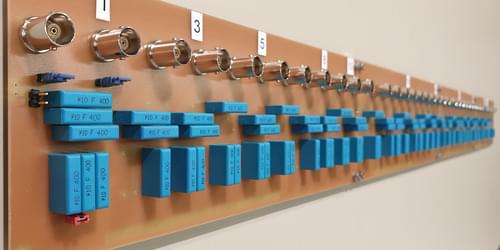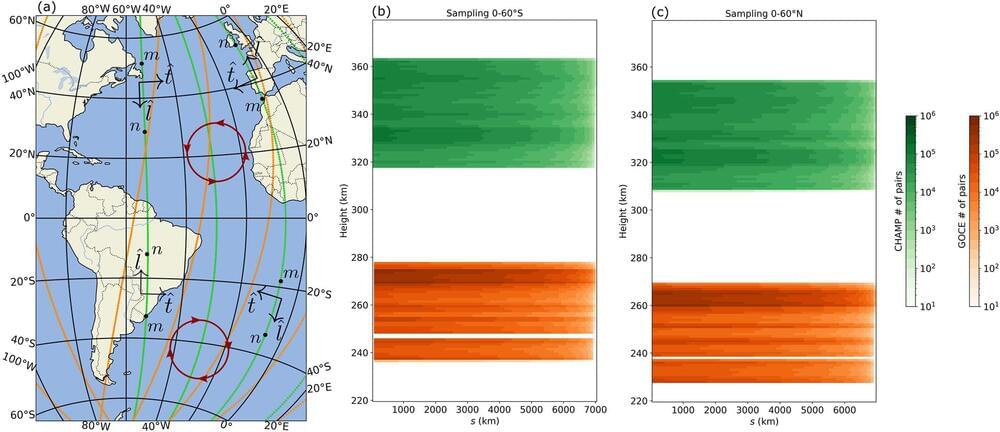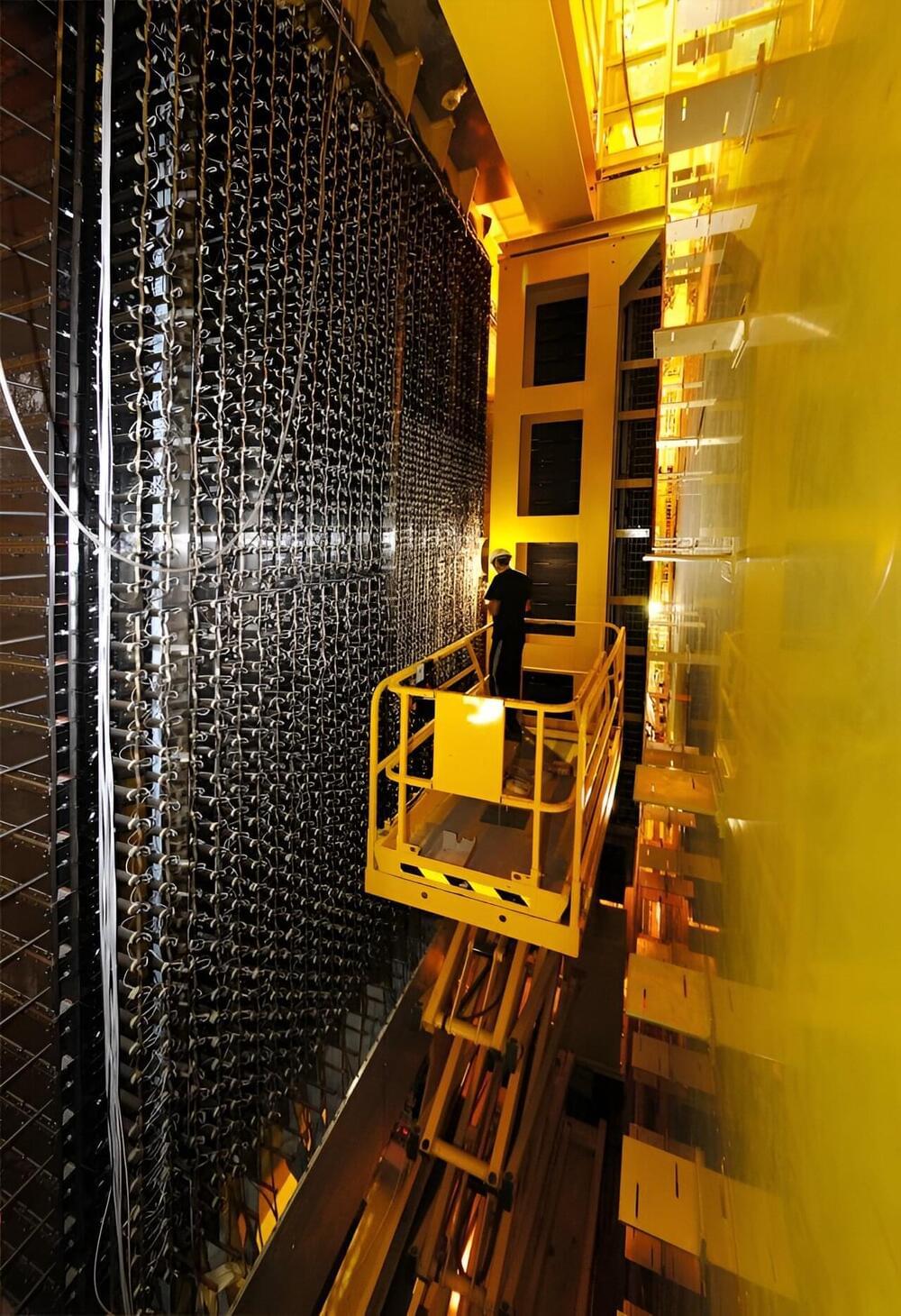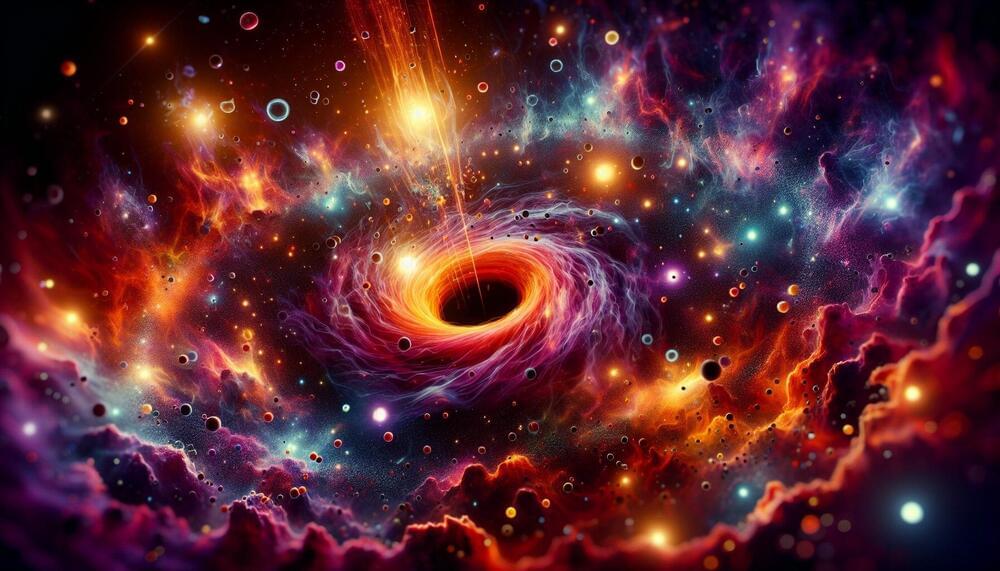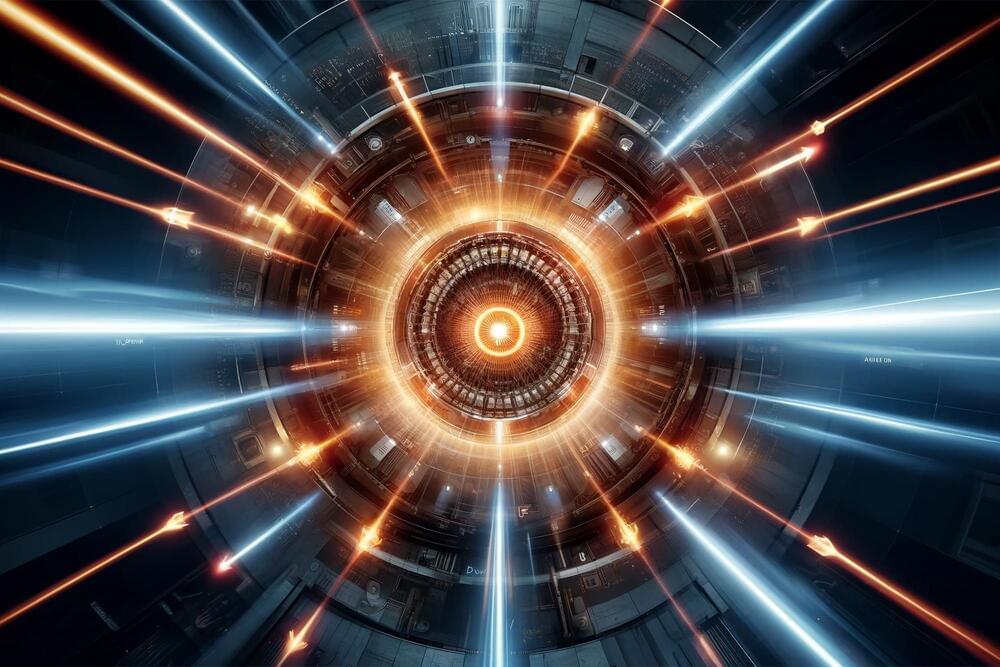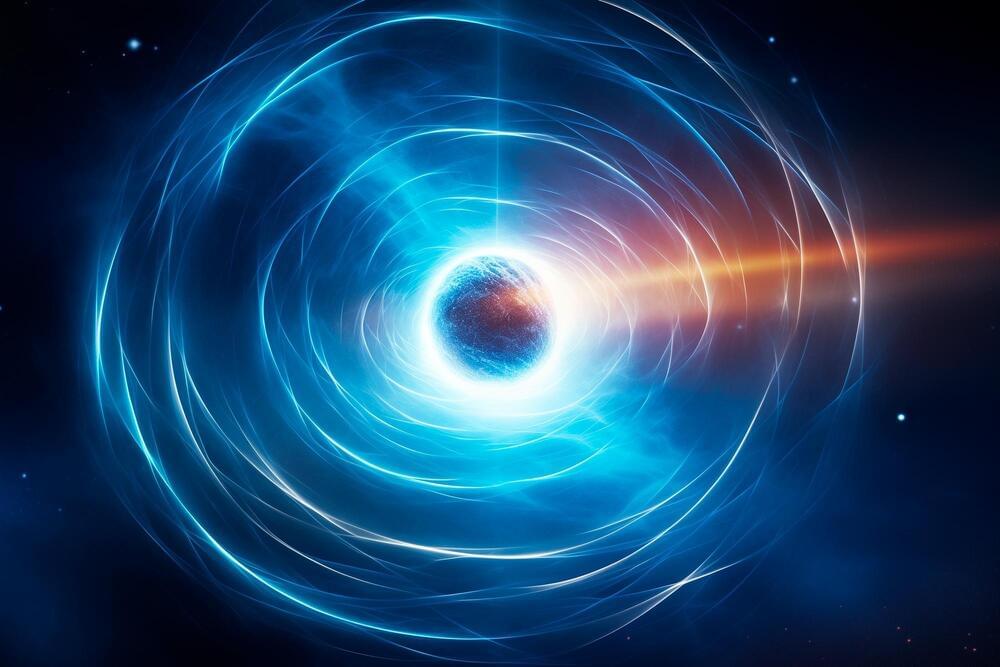Jun 7, 2024
Colorful Primordial Black Holes
Posted by Saúl Morales Rodriguéz in categories: cosmology, particle physics, quantum physics
Primordial black holes (PBHs)—hypothetical objects formed by the gravitational collapse of dense regions in the early Universe—have been invoked as dark-matter candidates. But for PBHs to constitute all dark matter, they’d have to be extremely light, possibly weighing less than small asteroids. Now Elba Alonso-Monsalve and David Kaiser of the Massachusetts Institute of Technology show that these diminutive PBHs could possess an exotic property—a net color charge (such a charge characterizes quarks and gluons in quantum chromodynamics theory) [1]. Such color-charged PBHs might have left potentially observable signatures, says Kaiser.
Observations rule out that stellar-mass PBHs could fully explain dark matter, but PBHs weighing between 1017 and 1022 g remain viable candidates. Since a PBH’s mass should relate to its age, this mass range corresponds to PBH formation immediately after the big bang, when the Universe was still a hot plasma of unconfined quarks and gluons. Most PBHs would have formed by engulfing large numbers of quarks and gluons having a distribution of color charges. These PBHs would be color-charge neutral and sufficiently massive to live until today. However, the duo’s calculations show that a few PBHs could have formed from regions so tiny that the charges of the absorbed gluons would be correlated, giving these PBHs a net charge.
Color-charged black holes have long been considered to be mathematically possible, but the new study is the first to propose a realistic formation mechanism, says Kaiser. The small sizes imply that they would have since evaporated. Yet their presence in the early Universe might have disrupted the distribution of protons and neutrons when the big bang created the first nuclear isotopes, leaving subtle traces in the cosmic abundance of the elements.
